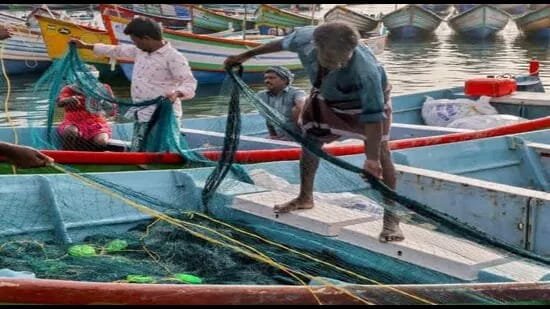Prayagraj, July 7, 2025 — To strengthen rural livelihoods and empower traditional fishing communities, Prayagraj district is launching a comprehensive river-based development initiative targeting over 51,000 local fisherfolk. The scheme, aimed at creating long-term employment, will utilize the region’s rich network of perennial rivers — Ganga, Yamuna, Tons, Belan, and Mansaitha — as a sustainable source of income.
Officials confirmed that 187 kilometers of river stretches across seven tehsils have been earmarked for fisheries development, and fishing rights will be auctioned beginning this month. The auction will cover 35 identified river segments, each ranging from 1.5 to 8 kilometers in length.
“This initiative is designed to provide legal access, economic stability, and a structured support system to fishing communities through cooperative societies,” said Pradeep Kumar, Chief Executive Officer of the Fishermen Development Agency, Prayagraj.
Only registered fishery cooperative societies will be eligible to bid in the auction, ensuring that fishing rights remain with local fisherfolk, fish farmers, and rural workers. These societies will receive government backing in the form of technical assistance, financial support, and access to markets, Kumar added.
The development effort spans a wide geography. In Bara Tehsil, six river stretches in the Yamuna have been identified. Handia will see fishing operations in two segments along the Ganga. Koraon will open three sections in the Belan and one in the Tons, while Phulpur includes four stretches in the Ganga and one each in the Varuna and Mansaitha rivers.
Karachhana will host four sections each in the Tons and Ganga, plus two in the Yamuna. Sadar tehsil has been assigned two segments in the Yamuna, and Meja will include four in the Tons and one in the Ganga.
“This is not just a resource distribution exercise—it’s a complete transformation plan,” said Kumar. “The goal is to modernize fishing practices, formalize income channels, and create collective strength through cooperative models.”
The district has already identified 51 fisheries cooperative societies to be linked to the programme. These societies will play a central role in managing fishing operations and ensuring fair practices, while also receiving institutional support under the state’s fisheries development mission.
The initiative arrives at a time when river-based livelihoods are under pressure from climate variability, unregulated competition, and limited access to capital. By aligning traditional skills with structured support and legal empowerment, the district administration hopes to convert Prayagraj’s rivers into engines of economic resilience for thousands of rural families.

